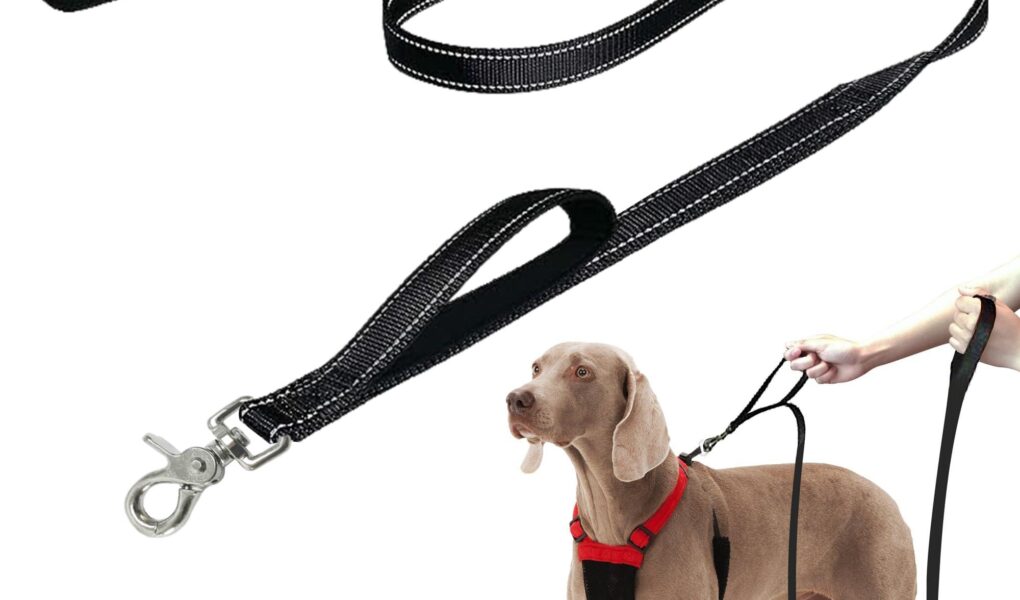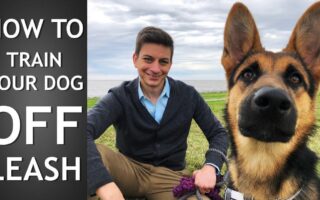Title: Mastering the Leash: A Guide to Training Your Adult Dog
Introducing an adult dog into your life is a rewarding adventure, filled with unique challenges and remarkable moments. Whether you’ve recently adopted a seasoned companion or are looking to refine the skills of a long-time furry friend, leash training is a critical part of building a harmonious relationship. Unlike puppies, adult dogs come with established habits and personalities, making the journey of leash training both intricate and fulfilling. In this article, we will delve into the essential strategies, techniques, and insights needed to transform your walks into enjoyable outings, fostering better communication and strengthening the bond between you and your canine companion. Prepare to embark on a journey of patience and perseverance, as we explore the art of leash training for adult dogs, unlocking the potential for joyful adventures together.
Table of Contents
- Understanding the Importance of Leash Training for Adult Dogs
- Essential Tools and Gear for Successful Leash Training
- Techniques for Teaching Loose Leash Walking
- Common Challenges in Leash Training and How to Overcome Them
- Q&A
- Closing Remarks
Understanding the Importance of Leash Training for Adult Dogs
When it comes to nurturing a strong bond with your adult dog, effective leash training plays a pivotal role. Unlike puppies, adult dogs may come with established habits, some of which can make walking a challenge. Implementing a structured training regime not only promotes safety during outings but also fosters a sense of security for your furry friend. Key benefits include:
- Enhanced Control: A well-trained dog is easier to manage, preventing potential accidents with other pets or pedestrians.
- Improved Focus: Teaching your dog to walk nicely on a leash encourages better attention to you, strengthening your communication.
- Reduced Behavior Problems: Consistent leash training can minimize excessive barking, pulling, and anxiety, leading to a more enjoyable walking experience.
Establishing a leash training routine requires patience and consistency. Some effective strategies include:
- Positive Reinforcement: Use treats and praise to reward desired behaviors, creating a positive association with the leash.
- Short Practice Sessions: Keep training sessions brief but frequent, ensuring your dog remains engaged and learns progressively.
- Gradual Exposure: Start in low-distraction environments before progressing to more stimulating areas, allowing your dog to adapt.
Consider utilizing a simple comparison table to gauge progress:
| Training Focus | Initial Challenges | Progress Indicators |
|---|---|---|
| Loose Leash Walking | Tugging, Pulling | Controlled pace, Relaxed leash |
| Stop and Go | Distraction, Ignoring commands | Responding promptly, Eye contact |
| Changing Directions | Inconsistent response | Following cues, Fluid movement |
Essential Tools and Gear for Successful Leash Training
To embark on an effective leash training journey, having the right equipment can make all the difference. Start with a high-quality leash, ideally one that is around 6 feet long for optimal control. This length provides enough room for your dog to explore while still keeping them under your guidance. Consider a comfortable collar or harness; harnesses are often preferred for larger breeds or strong pullers as they distribute pressure evenly across the body. Look for options with padded straps to ensure comfort during long training sessions. Additionally, a no-pull training harness can be beneficial for dogs prone to pulling, making walks more manageable and enjoyable for both of you.
Incorporating treats and toys into your training routine can also enhance the experience. Use small, soft treats that your dog loves, which can serve as immediate rewards for good behavior. A clicker can be another excellent tool for marking desired behaviors instantly. For distractions during training, a long line can give your dog more freedom to roam while still maintaining control. To keep things organized, consider a training bag to carry your gear, treats, and other essentials. Below is a simple overview of key tools that can aid in leash training:
| Item | Purpose |
|---|---|
| Leash | Controls the dog’s movement |
| Collar/Harness | Comfort and safety during walks |
| Treats | Positive reinforcement |
| Clicker | Mark desired behavior |
| Training Bag | Organizes training essentials |
Techniques for Teaching Loose Leash Walking
To achieve loose leash walking, the key lies in positive reinforcement and consistency. Begin by using a comfortable and well-fitted collar or harness that does not constrict your dog’s movement. Every time your dog maintains a loose leash, shower them with praise, treats, or a quick play session. This encourages them to associate walking calmly with rewards. Incorporate short training sessions into your daily routine, gradually increasing the duration as your dog becomes more accustomed to the practice. Remember, patience is crucial; if your dog pulls, stop walking and wait for them to return to your side before continuing. This technique will help reinforce the idea that pulling leads to a halt, while walking nicely gets them moving again.
In addition to consistent reinforcement, varying your pace and direction can keep your dog engaged and focused. Try these methods to improve their leash manners:
- Change direction suddenly to prompt your dog to pay attention to your cues.
- Use frequent stops to encourage your dog to check in with you regularly.
- Reward your dog with treats when they walk by your side, reinforcing the desired behavior.
To track your progress, consider creating a simple chart to monitor your dog’s improvements over time:
| Session | Duration (minutes) | Behavior Notes | Rewards Given |
|---|---|---|---|
| 1 | 10 | Some pulling, improved towards the end | 3 treats |
| 2 | 15 | Less pulling, checking in more often | 5 treats |
| 3 | 20 | Walking nicely with occasional distractions | 8 treats |
Common Challenges in Leash Training and How to Overcome Them
Leash training an adult dog can come with its fair share of challenges. One common issue encountered is pulling, where the dog eagerly lunges ahead on the leash, making walks chaotic. To address this, consider employing the technique of positive reinforcement. When your dog walks beside you without pulling, reward them with treats or praise. Additionally, using a no-pull harness can give you more control and reduce strain on both you and your dog, making the experience more enjoyable for both parties. Consistency and patience are key; make sure to practice regularly and gradually increase distractions as your dog improves.
Another challenge often faced during leash training is reactivity towards other dogs, people, or stimuli. This behavior can manifest as barking, lunging, or growling, which can be stressful for both you and your dog. To counteract reactivity, maintain a safe distance from the trigger and use positive reinforcement to redirect your dog’s attention back to you. A simple strategy involves teaching your dog the command “look” and rewarding them when they make eye contact. Consider using a training collar that allows for gentle corrections, but be sure to consult with a professional trainer to ensure safe techniques are applied.
Q&A
Q&A: Leash Training Your Adult Dog
Q: Why should I leash train my adult dog?
A: Leash training is essential for the safety of both you and your dog. An adult dog can still benefit from a structured walking routine, enhancing obedience, improving communication, and providing socialization opportunities. It also keeps your dog from wandering off or getting into potentially dangerous situations.
Q: Isn’t it too late to train an adult dog?
A: Not at all! While puppies are often seen as the ideal candidates for training, adult dogs are also very capable of learning new behaviors. With patience, consistency, and positive reinforcement, you can teach your adult dog how to be a well-mannered walking companion.
Q: What is the first step in leash training an adult dog?
A: The first step is to familiarize your dog with the leash. Allow them to sniff and explore it in a comfortable environment. Once they seem relaxed, attach the leash to their collar without immediately going outside. This helps them associate the leash with positive experiences.
Q: How should I choose the right leash and collar?
A: Opt for a leash that is comfortable for you to hold and suitable to your dog’s size and strength. A standard 4 to 6-foot leash is often recommended. For collars, choose one that fits snugly but allows for at least two fingers to fit between the collar and the dog’s neck. Consider a harness if your dog pulls significantly.
Q: What techniques can I use to teach my dog to walk properly on a leash?
A: Start with basic commands such as “sit” and “heel.” Reward your dog with treats and praise when they walk beside you without pulling. If they start to pull, stop walking and call them back to you. This teaches them that pulling won’t get them where they want to go.
Q: How can I address the issue of my dog pulling on the leash?
A: If your dog pulls, the key is to stop moving forward. When they cease pulling, even for a moment, reward them and proceed. You can also try changing directions suddenly to encourage them to pay attention to you. Consistency and patience will help curb this behavior.
Q: What should I do if my adult dog is reactive to other dogs or people while on a leash?
A: If your dog is reactive, consider keeping a safe distance from potential triggers. Use treats to reward calm behavior when they see other dogs or people. Gradual desensitization, where you slowly decrease the distance to the trigger while maintaining their focus on you, can be effective.
Q: How long should I expect leash training to take?
A: Training timelines can vary greatly depending on the dog’s temperament, prior experiences, and your consistency as a trainer. Some dogs may grasp leash manners within a few weeks, while others may take months. Stay optimistic and celebrate small victories along the way.
Q: Are there any resources I can use to support my leash training efforts?
A: Absolutely! Consider enrolling in a local obedience class, hiring a professional trainer, or using online resources and tutorials. Books and instructional videos can also provide valuable tips and techniques tailored to leash training.
Q: What should I remember while leash training my adult dog?
A: Remember that patience and consistency are your greatest allies. Each dog learns at their own pace, and celebrating progress—no matter how small—will keep both you and your dog motivated. Enjoy your walks together and make them a fun bonding experience!
Closing Remarks
leash training an adult dog may appear to be a challenging quest, but with patience, consistency, and the right approach, it can transform both your walks and your bond with your furry companion. Remember that every dog, regardless of age, is capable of learning new skills, and the journey to becoming a well-behaved leash walker is a testament to the trust and communication you foster together. So, as you head out for your next stroll, take a deep breath, embrace the process, and enjoy the simple pleasure of exploring the world side by side. Happy training, and may your future adventures be leash-free in spirit, no matter the length of the lead!



